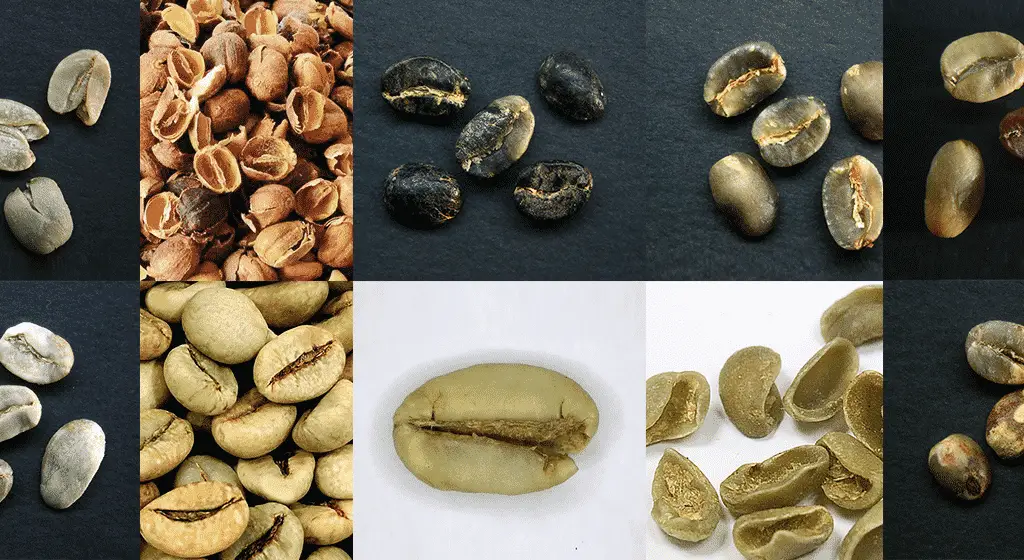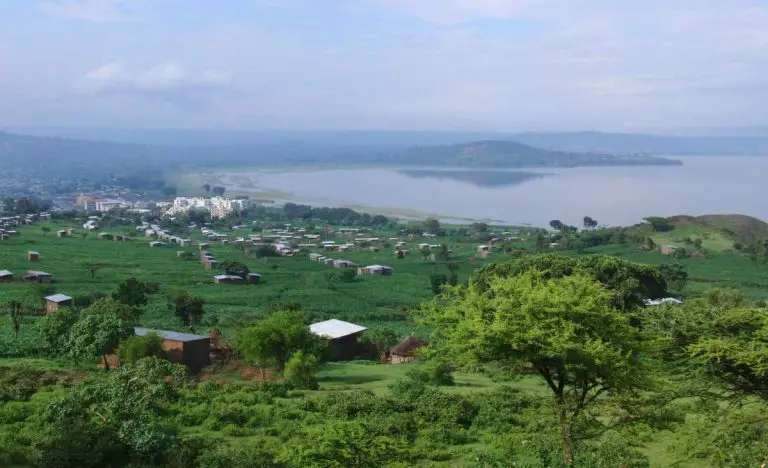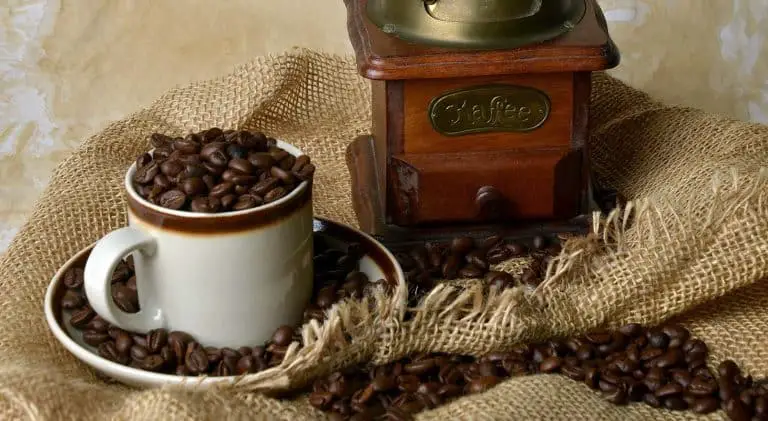How to Spot Coffee Bean Defects and How They Change Taste
Most importantly, I knew nothing about how the coffee bean defects were changing my coffee taste in the cup. I took the green coffee beans I bought online at face value, taking the quality for granted. I’ve now learned to look closely and inspect for specific defects and be on the lookout for damaged or defective beans.
Do Coffee Bean Defects affect the taste?
The taste of roasted coffee can be changed significantly by growing and processing defects present in the green coffee beans. The affect on the taste varies with some, like mouldy, sour or black beans rendering the coffee completely undrinkable. Other defects like crystalized beans and foreign matter have a minimal impact on the roasted coffee taste.
The coffee bean defects with the greatest affect on the finished taste are:
- Mouldy beans
- Sour Beans
- Black Beans
- Insect damaged beans
- Frost damaged beans
- Old beans
- Fungus damage
These are the worst defects which will ruin the taste of the coffee in the pot.
I searched the internet and there was very little available. So, I did some research and decided to write about my results. I was surprised at just how much the most common growing and processing bean defects can affect taste in the cup. I created the CBR Coffee Defect System which rates defects according to their affect on taste. They are rated from Low to Very High (1 to 6) with 6 having the highest impact on the taste in your cup.
The CBR Coffee Defect Rating System
Here’s my rating system for each bean defect on how it ultimately affects taste in the coffee cup.
| Defect Level | Impact on Taste in the Cup |
|---|---|
 |
LOW |
 |
LOW-MEDIUM |
 |
MEDIUM |
 |
MEDIUM-HIGH |
 |
HIGH |
 |
VERY HIGH |
Table of Contents
Click to jump to taste defect:
- Mouldy Beans – Taste defect 6
- Sour Beans – Taste defect 5
- Black Beans – Taste defect 4
- Insect Damaged Beans – Taste defect 4
- Frost Damaged Beans – Taste defect 4
- Old/Past Crop Beans – Taste defect 4
- Fungal Damage – Taste defect 4
- Chips/Pulper Nipper Beans – Taste defect 3
- Shells/Ears – Taste defect 3
- Floater Beans – Taste defect 3
- Immature Beans – Taste defect 3
- Mottled/Spotted Beans – Taste defect 3
- Withered Beans – Taste Defect 2
- Crystalized Beans – Taste defect 2
- Hulls/Husks – Taste defect 2
- Beans with Parchment – Taste defect 1
- Foreign Matter – Taste defect 1
Moldy Beans
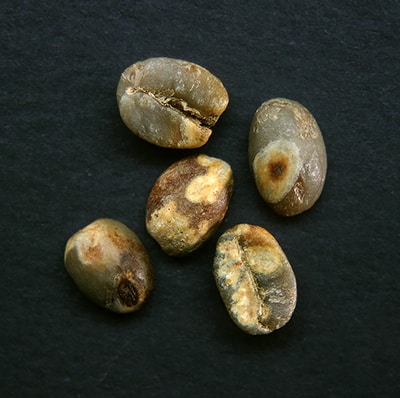

VERY HIGH IMPACT ON TASTE
- Mouldy/off flavour
- Loss of all aromatic and taste characteristics
- Potential health risk
Agricultural Causes
- Can be caused by harvesting and processing of fallen coffee berries which have been in contact with the ground
Processing Causes
- Can be high humidity and/or temperature conditions during storage and transportation
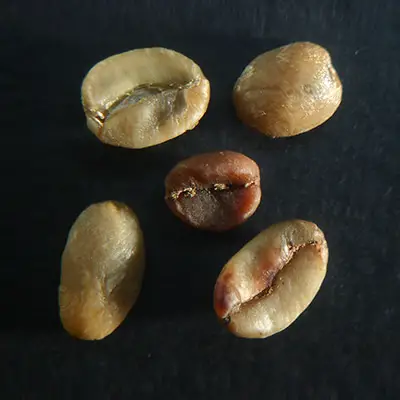

High Impact on Taste
-
- “Stinker” cup in extreme cases
- Sour, winey or acetic acid characteristics
Agricultural Causes
- Picking over-ripe or fallen cherries
Processing Causes
- Water contamination during wet processing
- Over recycling water in wet processing
- Dirty fermentation tanks
- Over-fermentation from slow dryin
- Storage with too high moisture content
- Over-fermentation in the fruit still attached to trees during humid conditions
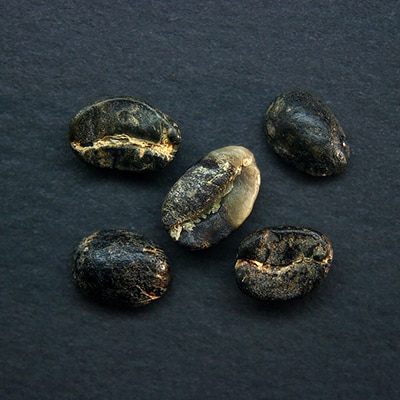

Medium-High Impact on Taste
- Ferment or stinker taste
- Dirty
- Mouldy
- Sour Phenolic taste
These can only be seen when the bean is unroasted. Just a few beans can contaminate a whole batch.
Agricultural Causes
- Bean has blackened from over fermentation
- Over-ripe coffee that has fallen to the ground
- Picking under-ripe coffee fruit with underveloped carbohydrate levels
Processing Causes
- Cased by unripe coffee that has been dried at temperatures that are too high
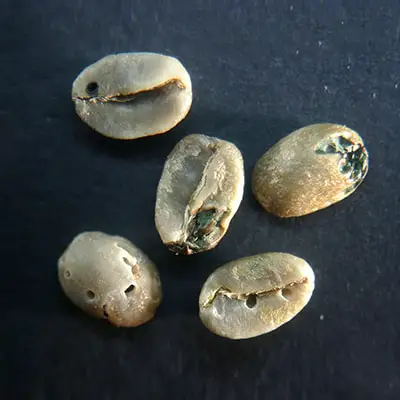

Medium-High Impact on Taste
- Ferment or stinker taste
- Dirty Mouldy taste
- Sour/ phenolic taste
Insects can invade the berry while on the tree or while stored and can kill the seed embryo and introducing musty and alkaline flavours in the cup. Should be removed at drying stage or affected beans can be removed before roasting.
Agricultural Causes
- Attack on the coffee fruit by the Berry Borer Beatle
Processing Causes
- Failure to remove of Berry Borer damaged beans in in the dry mill
- Weevel damage from poor storage practices
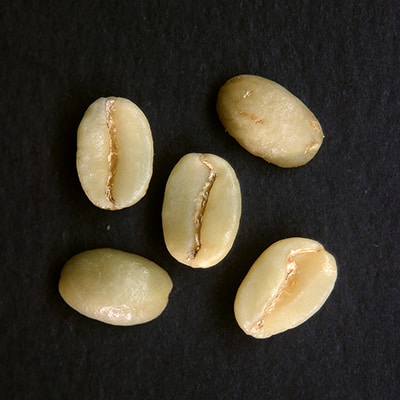

Medium-High Impact on Taste
- Minor frost damage leads to a loss of aroma and flavour, a decrease in mouthfeel intensity and overall quality
- Major frost damage leads to noticibly strong off-flavours in the cup
The change of taste results from the underdeveloped, stunted beans produced when the frost stops the development of the immature berry. The seed embryo can be damaged, resulting in an off flavour in extreme cases.
Agricultural Causes
- Frost damage to the coffee berry on the tree due to low temperatures
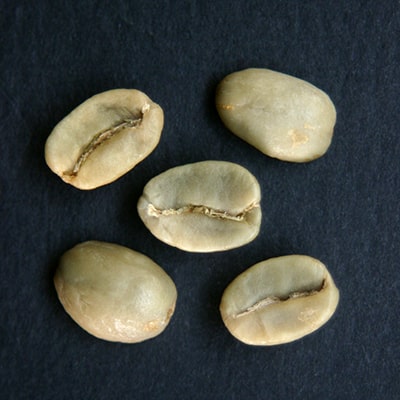

Medium-High Impact on Taste
- Reduction in acidity
- Increased astringency on surface of tongue
- Noticible woody taint to the flavour
- Baggy taste from rancid oils in coffee absorbing environmental contaminants
Agricultural Causes
- Bean has blackened from over fermentation
- Over-ripe coffee that has fallen to the ground
- Picking under-ripe coffee fruit with underveloped carbohydrate levels
Processing Causes
- Extended storage of coffee
- Unforseen delays in the transportation chain or extended transport routes to market
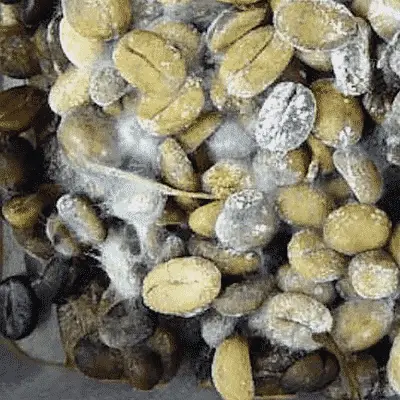

Medium-High Impact on Taste
- Fermented or stinker taste from rotten beans
- Dirty taste
- Noticible Mouldy taste
- Overly Sour taste Phenolic taste – plasticy, smokey, antiseptic taste
Agricultural Causes
- Left over beans beans in harvest sacks contamination newly picked berries
- Picking of fallen cherries which have been in contact with the ground
Processing Causes
- Poor cleaning of bean fermentation tanks between batches
- Delay in the drying process Storage of beans at high humidity and temperature levels
- Careless colour sorting in the dry mill
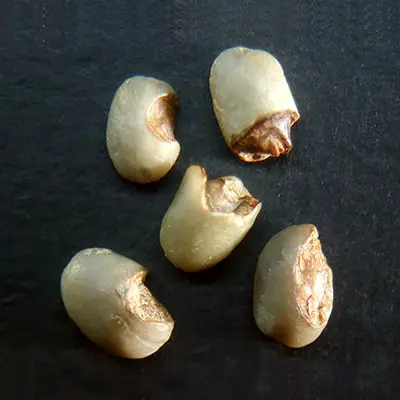

Medium Impact on Taste
- Chemical and ferment off-flavours
- Reduced aromatics
- Reduced acidity
- Scorching during roasting due to thin broken portions of the bean burning
Broken or chipped beans should be removed during sorting. many in a batch show carelessness in the production stage.
Agricultural Causes
- Can be caused by harvesting under-ripe, undersized beans
Processing Causes
- Too much mechanical pressure from pulping machines
- Processing under-ripe coffee through pulping machines
- Poor machinery callibration in the dry mill
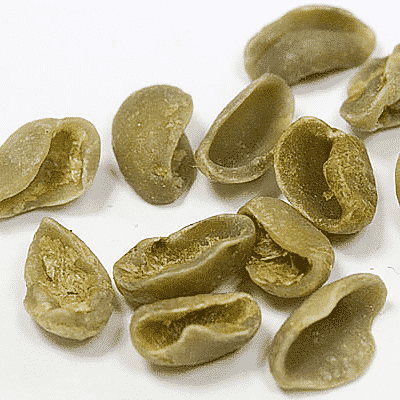

Medium Impact on Taste
- Shells may easily become overroasted and char.
- A burnt or charred flavour in the cup
Shells are mostly a visual defect which affects the taste in the cup by becoming overroasted because the beans are hollowed out with thin walls. To avoid this remove them prior to roasting if possible.
Agricultural Causes
- This is a naturally occurring phenomena, caused by genetics
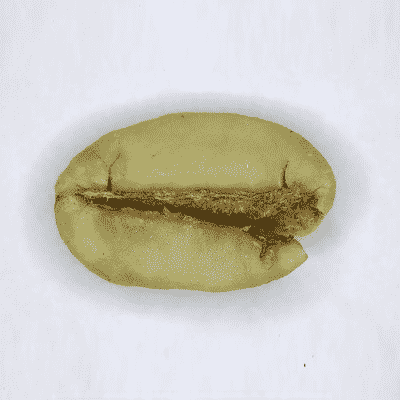

Medium Impact on Taste
- Results in noticibly reduced flavour and acidity in the cup
Floater beans are lightweight, underdeveloped beans. These spongy beans are distinctively light and faded usually with a mottled appearance.
Processing Causes
- Partially unknown cause, could be genetic
- Suspected causes are improper storage or uneven drying
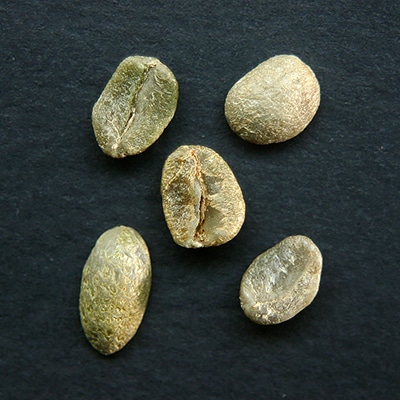

Medium Impact on Taste
- Results in increased bitterness and astringency in the cup
- Creates a noticible straw-like or greenish flavours
Agricultural Causes
- Harvesting of under-ripe or young berries
- Cultivation in unsuitable coffee production areas
- Lack of fertilizer
- Coffee trees have been affected by drought and rust disease
Processing Causes
- Caused by the failure to remove unripe berries during sorting
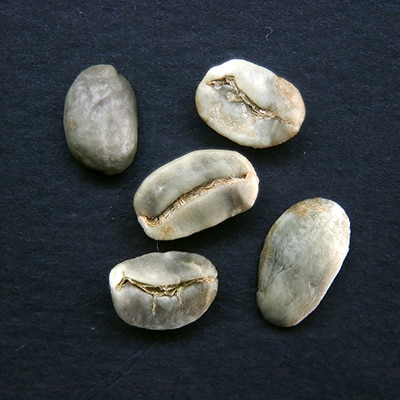

Medium Impact on Taste
- Reduced acidity
- Reduced flavour and aroma
- Slight mouldy or sweaty/off flavour
The uneven drying creates inconsistencies in the roast.
Processing Causes
- Faulty drying
- Re-wetting during drying stage
- Broken bean parchment allowing mould to enter before drying
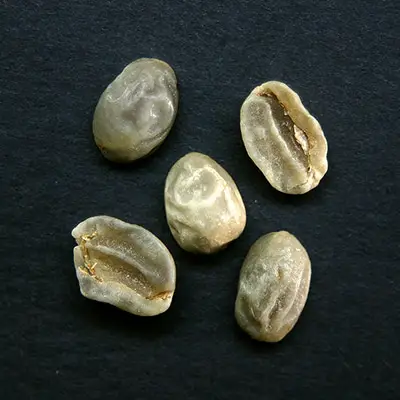

Low-Medium Impact on Taste
- Loss of acidity
- Reduced flavour characteristics Weed-like or straw-like
Agricultural Causes
- Trees stressed due to drought
- Underdeveloped fruit
- Poor fertilization
Processing Causes
- Bad bean density seperation during processing
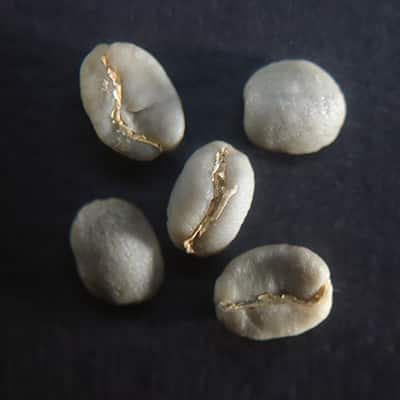

Low-Medium Impact on Taste
- Beans will break during roasting
- Loss of acidityin the cup
- Reduced flavour characteristics
Processing Causes
- Excessive drying of the beans at temperatures over 50°C (120°F)
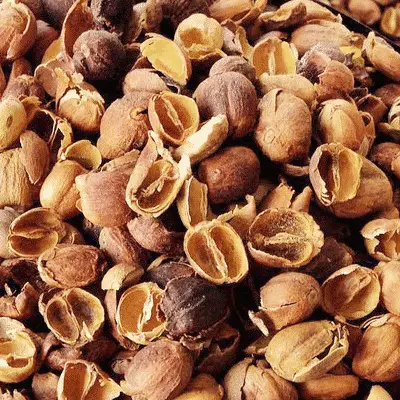

Low-Medium Impact on Taste
- Large amounts can lead to a range of off taints including dirty, earthy, fermented, mouldy or phenolic taste
- Also can be risk of fire in roasting
Processing Causes
- Washed Process Coffee: Poorly calibrated pulping equipment
- Natural Process Coffee: Poorly calibrated hulling equipment
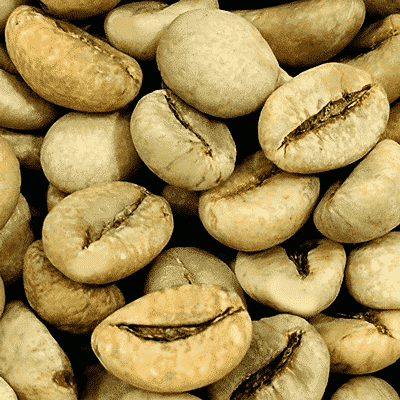

Low Impact on Taste
- Reduced intensity of flavour
- Increased risk of chaff fire during roasting
Processing Causes
- Due to poorly calibrated milling equipment
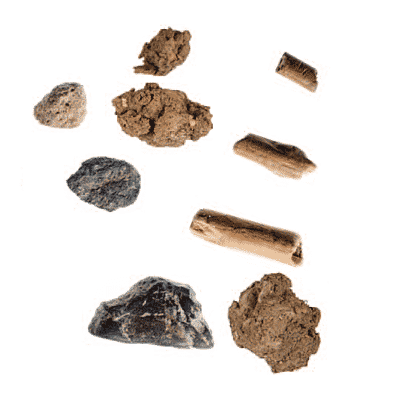

Low Impact on Taste
- Reduced intensity of flavour
- Increased risk of chaff fire during roasting
Processing Causes
- Can be added to the bean mass throughout processing
- Sticks and stones are collected with beans during harvesting
- Foreign matter can be left on drying tables between batches
- Magnets, and de-stoners not operating properly in the dry mill
So What Does This All Mean?
Let’s be realistic. We’d be surprised if any coffee we bought was completely defect free. This list of defects gives you the ability to start to recognise the quality of the beans you are buying. You’ll also be able to tell if the defects are changing the taste of what you’re roasting and by how much.
If you find a few defect beans in the roast with parchment pieces will not be doing much to your taste. A few moldy beans however should throw up a red flag and you should be testing if they have contaminated the whole batch. Stones or metal fragments in the roast should be removed if you treasure your grinder.
Also after assessing the coffee you’re getting for defects, you’ll start to recognize if your supplier cares what he’s selling and if that inexpensive coffee is really a good deal.
Happy roasting (and sorting)


